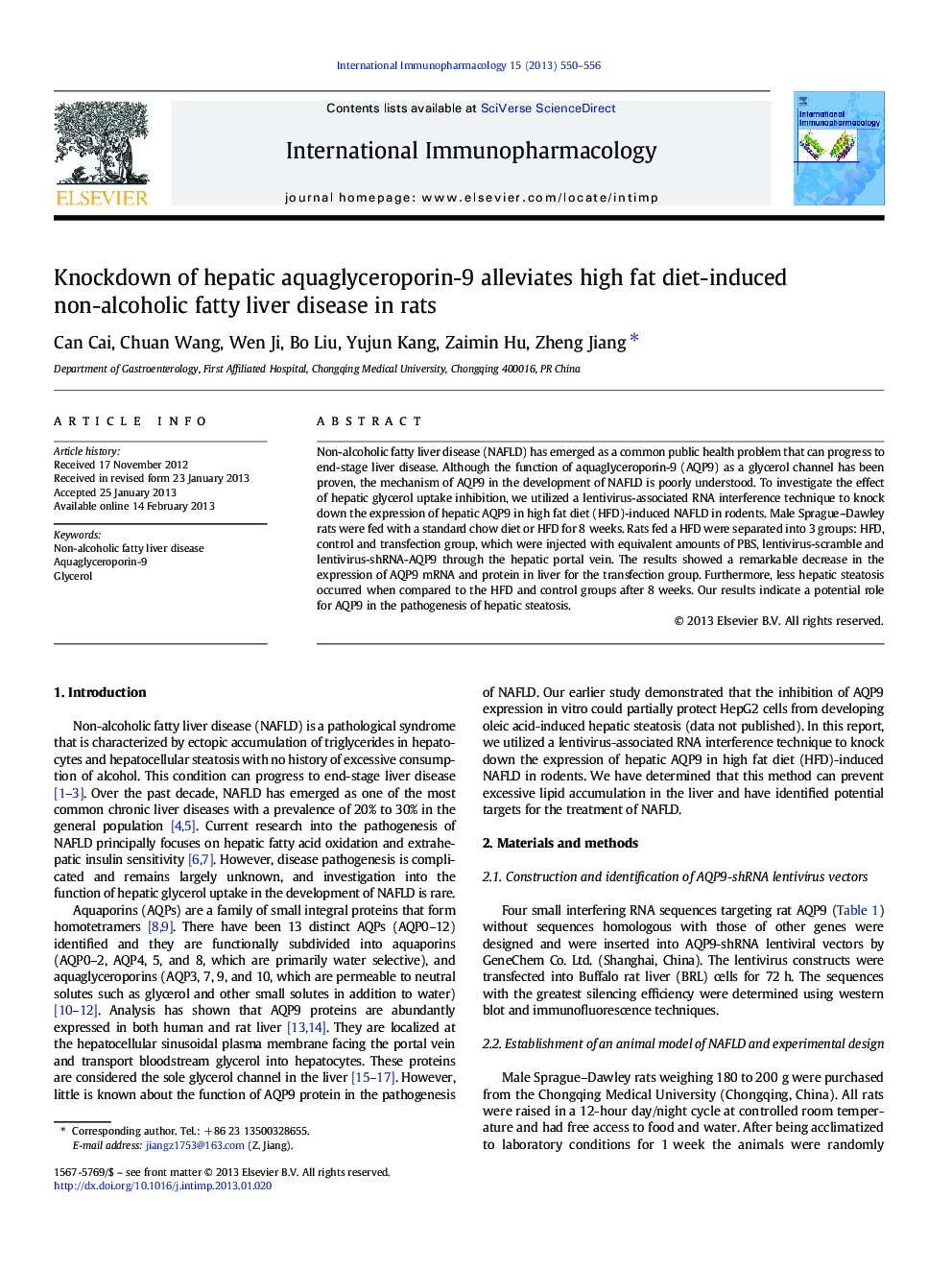| Article ID | Journal | Published Year | Pages | File Type |
|---|---|---|---|---|
| 5833311 | International Immunopharmacology | 2013 | 7 Pages |
Non-alcoholic fatty liver disease (NAFLD) has emerged as a common public health problem that can progress to end-stage liver disease. Although the function of aquaglyceroporin-9 (AQP9) as a glycerol channel has been proven, the mechanism of AQP9 in the development of NAFLD is poorly understood. To investigate the effect of hepatic glycerol uptake inhibition, we utilized a lentivirus-associated RNA interference technique to knock down the expression of hepatic AQP9 in high fat diet (HFD)-induced NAFLD in rodents. Male Sprague-Dawley rats were fed with a standard chow diet or HFD for 8Â weeks. Rats fed a HFD were separated into 3 groups: HFD, control and transfection group, which were injected with equivalent amounts of PBS, lentivirus-scramble and lentivirus-shRNA-AQP9 through the hepatic portal vein. The results showed a remarkable decrease in the expression of AQP9 mRNA and protein in liver for the transfection group. Furthermore, less hepatic steatosis occurred when compared to the HFD and control groups after 8Â weeks. Our results indicate a potential role for AQP9 in the pathogenesis of hepatic steatosis.
⺠AQP9-shRNA lentiviral effectively down-regulated AQP9 mRNA and protein expression in hepatic tissues. ⺠Knockdown of AQP9 expression alleviated hepatic steatosis. ⺠Knockdown of AQP9 expression improved intrahepatic lipid accumulation, but exacerbated serum lipids levels.
